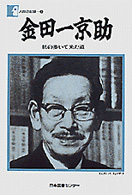- ホーム
- > 洋書
- > 英文書
- > Science / Mathematics
Full Description
Life on Earth can be traced back over three billion years into the past. Many examples of the Earth's former inhabitants are to be found in rocks, preserved as beautiful and fascinating fossils. The earliest life forms were bacteria and algae; these produced the oxygen that enabled more complex life forms to develop. About 600 million years ago multi-cellular organisms appeared on Earth, some of which could protect themselves with hard parts such as shells. Many of these life forms were readily fossilized and are used to subdivide geological time. Numerous species have evolved and most are now extinct. Lineages can be traced and extinctions explained as a consequence of terrestrial and extra-terrestrial events.
Now in a revised, updated and expanded Second Edition Introducing Palaeontology will continue to provide readers with a concise and accessible introduction to the science of palaeontology.
Contents
Part 1: the science of palaeontology; 1.1 Preface: the fascination of fossils; 1.2 A chancy business: the preservation of fossils; 1.3 From the field to laboratory: how to collect, curate and study fossils; 1.4 Code of conduct for fossil collectors; Taxonomy: how to classify and identify fossils; 1.6 Uses of fossils; 1.7 Fossil Lagerstatten: exceptional preservation of fossils; 1.8 Early ideas on the nature and significance of fossils. Part 2: Fossil Groups. 2.1 Algae and vascular plants; 2.2 Unicellular animals: Foraminifera and Radiolarians; 2.3 Sponges; 2.4 Cnidiria; 2.5 Bryozoans; 2.6 Molluscs; 2.7 Brachiopoda; 2.8 Echinoderma; 2.9 Arthropods; 2.10 Graptolites; 2.11 Conodonts; 2.12 Fishes; 2.13 Tetrapods and Amphibians; 2.14 Reptiles; 2.5 Birds; 2.16 Mammals; 2.17 Hominids and Hominins; 2.18 Trace Fossils. Glossary.








